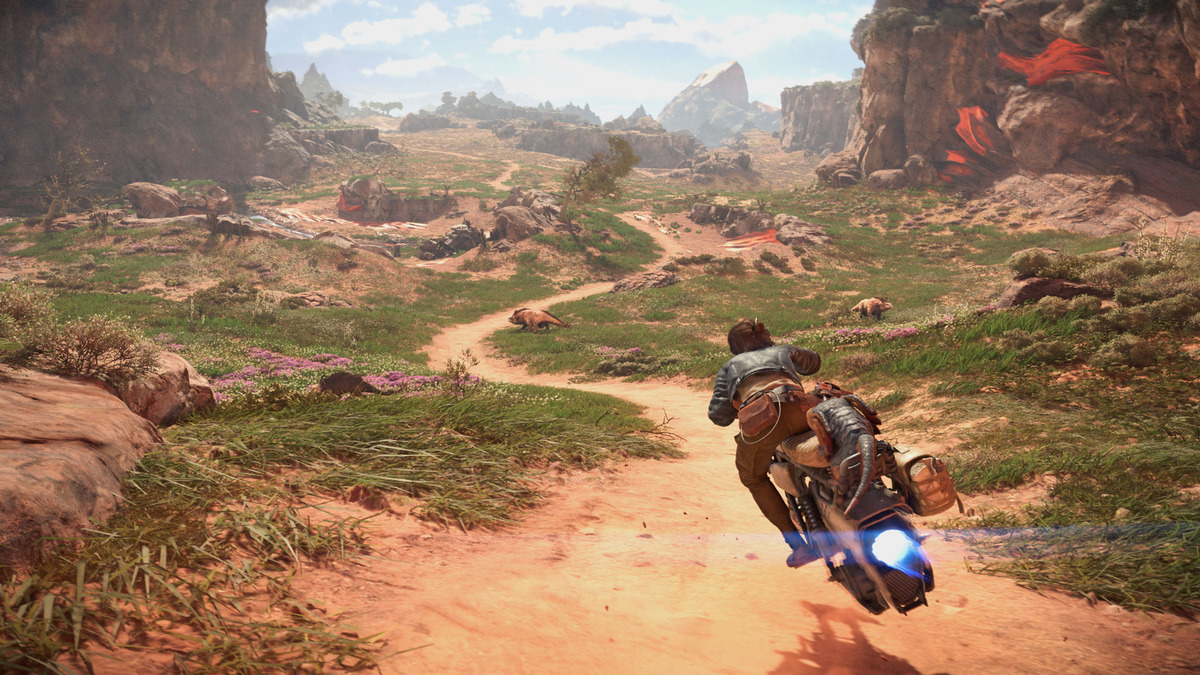‘Star Wars Outlaws’ does ‘Skyrim in Space’ better than ‘Starfield’
In space, no one can hear you complain about a lack of satisfying open-world activities.

Yeah, none of Star Wars Outlaws’ pretty planets are brimming with that “I want to live here” personality in Bethesda games, but Outlaws’ open-world planets brought me closer to “Skyrim in space” vibes than any of the thousands of planets in Starfield—vibes the latter game explicitly promised.
Outlaws and Starfield’s versions of an open-world space game are strikingly similar. Yet, Outlaws does it better in nearly every way, even if it still leaves plenty to be desired. Let’s call it a step in the right direction—a cleaner, more polished, condensed version of everything Starfield was trying to do. Starfield wants you to feel its vastness, while Outlaws opts for the illusion of it. Starfield wants to give you thousands of planets to explore. Outlaws whittles it down to a handful of curated spaces.
The explorable open spaces on planet surfaces in both games are limited to a small patch of land on a massive planet. Every traversable space in Outlaws feels within reach and doesn’t leave me feeling ripped off when I get there. I will find something of interest when I reach my waypoint and at several points along the way. A secret treasure. A chance encounter with an NPC that offers a side quest. A radiant combat encounter with a crime syndicate I’ve pissed off. Even Starfield’s most packed worlds are just barren lands and abandoned research stations stretching out into the infinite expanse.
The major cities of Starfield are glorified model playsets. So many of them lack that intangible feeling of instant familiarity I felt walking into Riftin in Skyrim or Diamond City in Fallout 4. I never came close to understanding the layout of Jemison, Starfield’s primary human colony, or any other major hub. I was going where the waypoints told me to, not because an intriguing structure in the distance compelled me to explore it up close.
Every major hub in Outlaws feels big but small enough to grasp quickly, inviting you to uncover its intricacies. Accessing some areas can be an issue since Outlaws hides optimal paths up mountains and into faction bases a little too well. Still, cities and points of interest throughout the world have paths that wind and secret passages tucked away in dark corners to discover while maintaining a focused design that funnels players to key areas, always hinting at fascinating avenues off the beaten path.
Like Starfield, Outlaws is broken up into layers separated by loading screens. Initiate takeoff to trigger an animation and then regain control once your ship is in space. Just outside of the planet, there’s an open-world space section filled with activities, sights to see, missions to complete, and plenty of space combat.
None of Outlaws’ space stuff feels like it needed to be included. Same goes for Starfield. It’s a symptom of trying to do too much and be everything, a fatal flaw both games share. Thankfully, Outlaws’ celestial open-worlds share a design philosophy with its terrestrial open worlds. Space is three-dimensional; anything can be anywhere, but Massive Entertainment mostly puts all the points of interest along the same plane.
If you want to do the dangerous mission on the imperial space station, well that’s just to the left of the spaceship graveyard, which is to the left of a fueling station. All the interesting things you can do in space are at most 20 seconds away from each other, allowing for that rewarding Skyrim-like sense of accidental discovery that tears you off the path while on the way to a destination that you forgot you were going to after a while. Outlaws’ sense of seamless trailblazing, which was a fixture of previous Bethesda outings, was almost entirely absent and sorely missed in Starfield.
The tendrils of each game’s open-world philosophies extend into the character upgrade systems. Starfield’s upgrade system is reliant on the accumulation of XP to upgrade your skills and abilities in the menus. Outlaws, instead, rips the skill tree out of the menus and folds it into the world. If you want to get better at hacking, seek out the hacking teacher, who will offer a series of missions and tasks that take you all over the map. The more you explore, the more skilled you become. Unfortunately, this means you have to engage directly with its biggest faults—stealth and combat—but it’s a good idea at its core.
Outlaws wants to be a little bit of Assassin’s Creed but doesn’t provide any of the slick gadgets and controls to manipulate the NPC chess pieces around the board to your benefit. It provides tall swaying grass like the Horizon series but when the rare enemy walks by directly within another enemy’s line of sight then I don’t feel comfortable sneak attacking from the bushes. It borrows elements from other open-world stealth games without realizing why or how those elements work. When it comes to combat mechanics, Bethesda may not have perfected its offerings but they know how to use them within the environments they build. Massive Entertainment has some lessons to learn.
I hope they learn them and get to apply them to a sequel, even if Outlaws hasn’t been selling well. It’s a shaggy game but the foundations of an engrossing open world are there, begging to be iterated upon. It already has a significant leg up on its competition since Outlaws expresses the stated ideals of Starfield better than Starfield.
It kind of, sort of, delivers on the promise of a completely different game that, itself, promised to be a familiar game in a different setting. Starfield will never be “Skyrim in space,” something I wanted badly from the second it was promised. But I’m happy Star Wars Outlaws got us a little bit closer to it, with miles left to go.
Have a tip we should know? [email protected]
